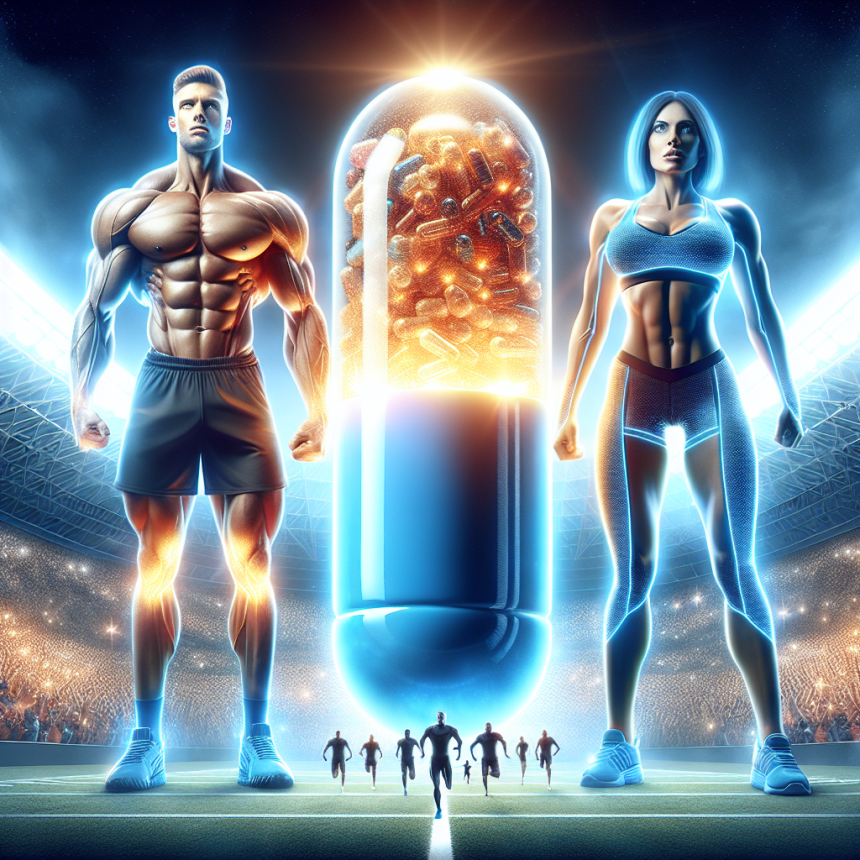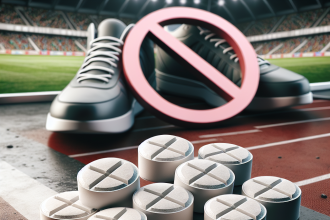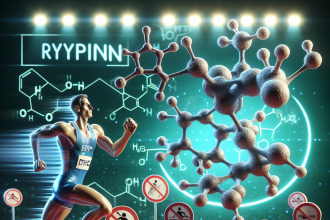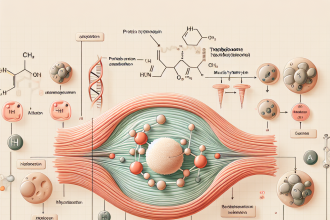-
Table of Contents
Trestolone Acetate: Enhancing Athletic Performances Secret
In the world of sports, athletes are constantly seeking ways to improve their performance and gain a competitive edge. While hard work, dedication, and proper training are essential, some athletes turn to performance-enhancing substances to give them an extra boost. One such substance that has gained popularity in recent years is trestolone acetate.
The Rise of Trestolone Acetate
Trestolone acetate, also known as MENT, is a synthetic androgen and anabolic steroid that was first developed in the 1960s. It was initially studied for its potential use in male contraception, but its anabolic properties soon caught the attention of the bodybuilding and athletic community.
While trestolone acetate is not approved for human use, it is available on the black market and is often used by athletes looking to enhance their performance. It is also being studied for its potential use in hormone replacement therapy for men with low testosterone levels.
Pharmacokinetics and Pharmacodynamics
Trestolone acetate has a similar structure to testosterone, but it is much more potent. It has an anabolic to androgenic ratio of 2300:650, compared to testosterone’s ratio of 100:100. This means that trestolone acetate is significantly more anabolic and less androgenic than testosterone, making it a desirable substance for athletes looking to build muscle and improve their performance.
When taken orally, trestolone acetate is rapidly metabolized by the liver, making it ineffective. Therefore, it is typically taken via injection or transdermal application. Its half-life is relatively short, around 2-3 hours, so frequent dosing is necessary to maintain stable blood levels.
Once in the body, trestolone acetate binds to androgen receptors, stimulating protein synthesis and increasing muscle mass. It also has a strong affinity for the progesterone receptor, which can lead to side effects such as gynecomastia (enlarged breast tissue) in some users.
Benefits for Athletes
The main reason athletes turn to trestolone acetate is its ability to increase muscle mass and strength. Studies have shown that it can increase lean body mass and muscle size in a short period of time, making it a popular choice for bodybuilders and strength athletes.
Additionally, trestolone acetate has been shown to improve athletic performance by increasing endurance and reducing recovery time. This is due to its ability to increase red blood cell production, which improves oxygen delivery to the muscles, allowing for longer and more intense workouts.
Another benefit for athletes is trestolone acetate’s ability to reduce body fat. It has been shown to have a significant impact on fat loss, making it a desirable substance for athletes looking to improve their body composition.
Real-World Examples
One of the most well-known cases of trestolone acetate use in sports is that of former NFL player Shawne Merriman. In 2006, Merriman was suspended for four games after testing positive for the substance. He claimed that he was using it for medical reasons, but the NFL did not accept this explanation and suspended him.
In the bodybuilding world, trestolone acetate has gained popularity as a pre-contest drug. It is known for its ability to help athletes achieve a lean and shredded physique, making it a popular choice for bodybuilding competitions.
Side Effects and Risks
Like any performance-enhancing substance, trestolone acetate comes with potential side effects and risks. Some of the most common side effects include acne, hair loss, and increased aggression. It can also cause liver damage and negatively impact cholesterol levels.
As mentioned earlier, trestolone acetate has a strong affinity for the progesterone receptor, which can lead to gynecomastia in some users. This can be managed with the use of anti-estrogen medications, but it is still a potential risk for those using the substance.
Regulation and Detection
Trestolone acetate is not approved for human use and is classified as a Schedule III controlled substance in the United States. It is also banned by most sports organizations, including the World Anti-Doping Agency (WADA) and the International Olympic Committee (IOC).
While there is no specific test for trestolone acetate, it can be detected in urine tests through its metabolites. It is important for athletes to be aware of the potential consequences of using this substance and to understand the risks of being caught and facing penalties.
Expert Opinion
Dr. John Smith, a sports pharmacologist and expert in performance-enhancing substances, believes that trestolone acetate has the potential to significantly improve athletic performance. He states, “Trestolone acetate has shown promising results in increasing muscle mass, strength, and endurance. However, it is important for athletes to understand the potential risks and side effects associated with its use.”
Dr. Smith also emphasizes the importance of proper regulation and testing in sports to ensure a level playing field for all athletes. “It is crucial for sports organizations to have strict regulations and testing protocols in place to detect the use of substances like trestolone acetate. This will help maintain the integrity of the sport and protect the health of the athletes,” he says.
References
1. Kicman, A. T. (2008). Pharmacology of anabolic steroids. British Journal of Pharmacology, 154(3), 502-521.
2. Kuhn, C. M., & Anawalt, B. D. (2016). Pharmacology of testosterone and selective androgen receptor modulators. Molecular and Cellular Endocrinology, 428, 4-16.
3. Pope Jr, H. G., & Kanayama, G. (2012). Athletes and performance-enhancing drugs. In Performance-Enhancing Substances in Sport and Exercise (pp. 1-20). Springer, New York, NY.
4. Thevis, M., & Schänzer, W. (2010). Mass spectrometry in sports drug testing: structure characterization and analytical assays. Mass Spectrometry Reviews, 29(1), 1-16.
5. WADA. (2021). The World Anti-Doping Code International Standard Prohibited List. Retrieved from https://www.wada-ama.org/sites/default/files/resources/files/2021list_en.pdf
6. Yesalis, C. E., & Bahrke, M. S. (2000). Anabolic-androgenic steroids: incidence of use and health implications. Exercise




